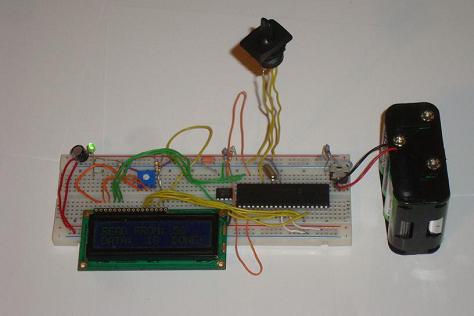An Overview Of The I2C PIC Interfacing Tutorial
I2C interfaces are extremely important as they offer a quick and easy way to implement a Master-Slave channel of communication. This tutorial only covered the very basics of how I2C works, using a simple EEPROM. I2C can also be used with other processors to tell them what to do, much like USB, Serial or Parallel can.

What To Do Now
As I mentioned before, this tutorial only covers the very basics of what I2C can do. As you venture into more hobbyist electronics you will find that often times sensors use I2C communication and other times that you'll need to build complex systems with Master-Slave communication where I2C is your answer. There are truly many routes you can take forward with the knowledge gained from going through and completing this tutorial. As a next step, try interfacing a PIC -> PIC with I2C, you will see things become a little more difficult.
Conclusion
As far as this tutorial is concerned, the goals were reached. The software worked as expected and the PIC used I2C successfully to write data to an EEPROM device. The I2C theory was explained out in a concise manner by looking at the actual I2C signal and disecting it into frames.
The main things to take away from using I2C are that you need to use pull-up resistors on the SDA and SCL signals and that you must use the formula in the software section for calculating the SSPADD value properly, or else things simply won't work.
If you have any further questions, I implore you...don't be shy, take a look at the forums or ask a question there. I check them out regularly and love getting comments & questions.
I2C interfaces are extremely important as they offer a quick and easy way to implement a Master-Slave channel of communication. This tutorial only covered the very basics of how I2C works, using a simple EEPROM. I2C can also be used with other processors to tell them what to do, much like USB, Serial or Parallel can.

What To Do Now
As I mentioned before, this tutorial only covers the very basics of what I2C can do. As you venture into more hobbyist electronics you will find that often times sensors use I2C communication and other times that you'll need to build complex systems with Master-Slave communication where I2C is your answer. There are truly many routes you can take forward with the knowledge gained from going through and completing this tutorial. As a next step, try interfacing a PIC -> PIC with I2C, you will see things become a little more difficult.
Conclusion
As far as this tutorial is concerned, the goals were reached. The software worked as expected and the PIC used I2C successfully to write data to an EEPROM device. The I2C theory was explained out in a concise manner by looking at the actual I2C signal and disecting it into frames.
The main things to take away from using I2C are that you need to use pull-up resistors on the SDA and SCL signals and that you must use the formula in the software section for calculating the SSPADD value properly, or else things simply won't work.
If you have any further questions, I implore you...don't be shy, take a look at the forums or ask a question there. I check them out regularly and love getting comments & questions.